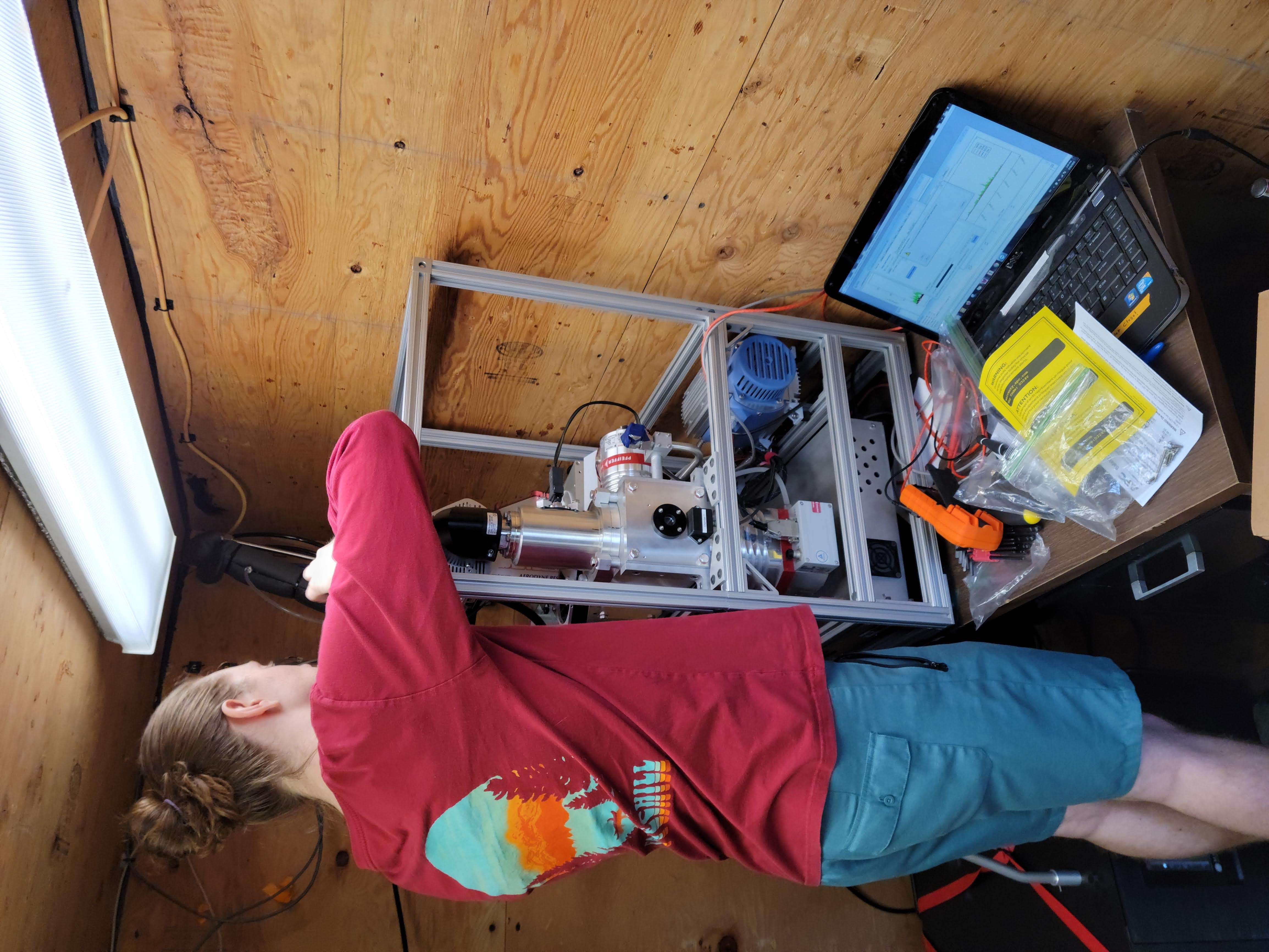UAF will buy instruments to expand Fairbanks air studies
Rod Boyce
907-474-7185
Aug. 7, 2024
A $702,000 National Science Foundation grant to the University of Alaska Fairbanks will pay for two science instruments to expand the study of wintertime air pollution and summertime wildfire smoke in cold-weather cities such as Fairbanks.

Ice fog blankets parts of Fairbanks as seen from the West Ridge viewpoint at the University of Alaska Fairbanks on Feb. 2, 2024.
The instruments, which will be the university’s largest for atmospheric chemistry research, will also allow for continued study of indoor air quality.
UAF associate professor Jingqiu Mao obtained the funding through NSF’s Major Research Instrumentation Program. Mao is affiliated with the UAF Geophysical Institute and the UAF College of Natural Science and Mathematics.
The grant will bring to UAF instruments that are similar to the ones other universities brought to Fairbanks for an international air quality research campaign in January 2022. That seven-week campaign examined the physical and chemical processes that lead to the community’s poor wintertime air quality. Those instruments have returned to their universities.
“These will be the first ones that belong to Alaska,” Mao said. “They will be a big boost for atmospheric sciences research in our state.”
For Fairbanks, the two instruments will provide air quality measurements at a location every five minutes and reveal particle composition and size. The Alaska Department of Environmental Conservation currently takes measurements once per day.

UAF student James Campbell maintains an instrument that would later be used in the 2022 Fairbanks air quality research campaign. The instrument belongs to Georgia Tech and was brought to Fairbanks temporarily for the research effort. It is similar to an instrument that UAF will buy.
Data from the instruments might also reveal information about the impact of the state-mandated change to low-sulfur heating fuel in the area of Fairbanks that violates federal air quality standards. The U.S. Environmental Protection Agency has put Fairbanks in its “serious” category and has threatened sanctions.
Particles of 2.5 microns or less, known as PM2.5, have been shown to cause respiratory illnesses and heart ailments in residents of cold-weather communities with poor air dispersion. Particles of less than one-tenth of a micron pose a greater risk to human health, as they can penetrate deeper into the body.
Purchase of the instruments had the support of air quality divisions of the Fairbanks North Star Borough and the state of Alaska, which both provided letters to Mao in 2023.
“The instruments proposed and the expected outcomes from the utilization of those instruments will significantly help in the understanding of the impact of heating oil regulation on air quality,” the borough’s letter reads.
“These results will also serve as important guidance for development and implementation of new measures in the near future,” it adds.
The state letter says the Department of Environmental Conservation operates several pollutant monitoring sites but “does not have the capability at this time to conduct research to answer some of these important questions.”
“DEC is very interested in expanding its understanding of particulate matter composition and source profiles in the Fairbanks North Star Borough serious nonattainment area,” the letter reads.
Mao said the instruments, which are movable, will first be placed in downtown Fairbanks and that he expects them to be functioning this winter. He said they may eventually be used in North Pole.
ADDITIONAL CONTACT: Jingqiu Mao, 907-474-7118, jmao2@alaska.edu
028-25


